Pink eye, medically known as conjunctivitis, is a common eye condition characterized by inflammation of the conjunctiva—the clear, thin membrane that covers the white part of the eye and lines the inner surface of the eyelids. It is named for the pink or reddish appearance that occurs when the blood vessels in the conjunctiva become inflamed or dilated. Pink eye can affect one or both eyes and is often accompanied by symptoms such as itching, burning, redness, and discharge.
This condition can be caused by viral or bacterial infections, allergies, or irritants, and its treatment and management depend on the underlying cause. Understanding the symptoms, causes, and appropriate treatment options for pink eye is essential in effectively managing this common and sometimes contagious eye condition.
Table of Contents
Causes of Pink Eye—And How Contagious Is It?

Pink eye, or conjunctivitis, can be caused by several factors, each with varying degrees of contagion. Understanding these causes is essential for preventing its spread and ensuring proper treatment.
Causes of Pink Eye:
- Viral Conjunctivitis:
- Cause: Often caused by adenoviruses, but other viruses like the herpes simplex virus can also be responsible.
- Symptoms: Watery discharge, itching, and a gritty feeling in the eye.
- Contagiousness: Highly contagious. It spreads easily through direct contact with infected eye secretions, contaminated objects, or respiratory droplets from coughing or sneezing.
- Duration: Can last from several days to two weeks, with the individual being contagious as long as symptoms are present.
- Bacterial Conjunctivitis:
- Cause: Caused by bacteria such as Staphylococcus aureus, Streptococcus pneumoniae, or Haemophilus influenzae.
- Symptoms: Thick, yellow-green discharge, crusting of the eyelashes, and redness.
- Contagiousness: Highly contagious. It spreads through contact with infected eye secretions, contaminated hands, or objects.
- Duration: Can last from a few days to a week, with antibiotic treatment often reducing contagiousness after 24-48 hours.
- Allergic Conjunctivitis:
- Cause: Triggered by allergens such as pollen, pet dander, dust mites, or mold.
- Symptoms: Redness, itching, tearing, and swelling, often accompanied by other allergy symptoms like sneezing and a runny nose.
- Contagiousness: Not contagious. It is a reaction to allergens and does not spread from person to person.
- Duration: Can persist as long as the person is exposed to the allergen.
- Irritant Conjunctivitis:
- Cause: Resulting from exposure to irritants such as smoke, chlorine in swimming pools, or foreign objects in the eye.
- Symptoms: Redness, watering, and irritation.
- Contagiousness: Not contagious. It is caused by exposure to irritants rather than an infectious agent.
- Duration: Typically resolves once the irritant is removed and the eye is flushed out.
Contagiousness of Pink Eye:
- Viral and Bacterial Conjunctivitis: Both types are highly contagious and can spread easily in communal settings such as schools, workplaces, and households. Preventive measures include:
- Frequent handwashing with soap and water.
- Avoiding touching or rubbing the eyes.
- Using separate towels, bedding, and personal items for the infected individual.
- Disinfecting surfaces and objects that may be contaminated.
- Staying home from work or school until no longer contagious, as advised by a healthcare provider.
- Allergic and Irritant Conjunctivitis: These forms of conjunctivitis are not contagious and do not require isolation. Managing exposure to allergens or irritants and using appropriate medications can help alleviate symptoms.
Understanding the causes and contagiousness of pink eye is crucial for effective prevention and treatment. By recognizing the symptoms and following proper hygiene practices, the spread of infectious conjunctivitis can be minimized, and individuals can seek appropriate medical care to address their specific condition.
Pink Eye Signs and Symptoms

Pink eye, or conjunctivitis, presents with a variety of signs and symptoms that can vary depending on the underlying cause. Here are the common signs and symptoms associated with different types of pink eye:
General Symptoms of Pink Eye:
- Redness: The white part of the eye (sclera) appears red or pink due to inflammation and dilation of blood vessels.
- Discomfort: A feeling of irritation, grittiness, or a sensation of having something in the eye.
- Tearing: Increased tear production.
- Swelling: Swelling of the conjunctiva and/or eyelids.
- Light Sensitivity: Sensitivity to bright light (photophobia) in some cases.
Viral Conjunctivitis:
- Watery Discharge: Clear, watery discharge from the eye.
- Itching: Intense itching or irritation.
- One or Both Eyes: Often starts in one eye and can spread to the other.
- Associated Symptoms: May be accompanied by other symptoms of a viral infection, such as a sore throat, runny nose, or fever.
Bacterial Conjunctivitis:
- Thick Discharge: Thick, yellow or greenish discharge that can cause the eyelids to stick together, especially after sleep.
- Redness and Swelling: Significant redness and swelling of the conjunctiva and eyelids.
- One or Both Eyes: Can affect one or both eyes.
- Pain: Mild to moderate eye pain or discomfort.
Allergic Conjunctivitis:
- Itching: Severe itching is a hallmark symptom.
- Tearing: Profuse tearing.
- Redness: Redness in the eyes.
- Swelling: Swollen eyelids.
- Both Eyes: Typically affects both eyes.
- Associated Symptoms: May be accompanied by other allergy symptoms, such as sneezing, nasal congestion, and a runny nose.
Irritant Conjunctivitis:
- Redness and Irritation: Redness and irritation following exposure to an irritant (e.g., smoke, chlorine, foreign objects).
- Watery Discharge: Watery or mucus-like discharge.
- Pain or Discomfort: Burning or stinging sensation.
- One or Both Eyes: Can affect one or both eyes, depending on the exposure.
Recognizing the signs and symptoms of pink eye is crucial for identifying the type of conjunctivitis and seeking appropriate treatment. While some forms of pink eye, particularly viral and bacterial conjunctivitis, are highly contagious and require preventive measures to avoid spreading, others, like allergic and irritant conjunctivitis, are not contagious but still require proper management to alleviate discomfort. If in doubt, consult a healthcare provider for accurate diagnosis and treatment recommendations.
What the Condition May Look Like: Pictures of Pink Eye
While I cannot provide actual images, I can describe the appearance of different types of pink eye to help you understand what to look for. Here’s a detailed description of the visual characteristics of pink eye:
Viral Conjunctivitis:

- Redness: The white part of the eye (sclera) appears red or pink.
- Watery Discharge: Clear, watery discharge may be visible, causing the eyes to appear teary.
- Swollen Eyelids: Mild swelling of the eyelids can occur.
- One or Both Eyes: Often starts in one eye and may spread to the other.
- Other Symptoms: Accompanying symptoms of a viral infection such as runny nose or sore throat.
Bacterial Conjunctivitis:
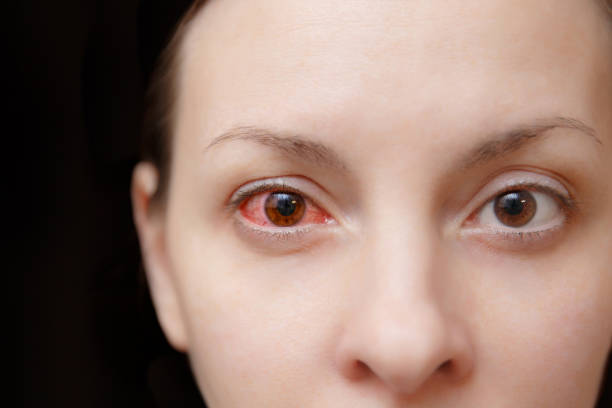
- Redness: The sclera is noticeably red or pink.
- Thick Discharge: Thick, yellow or green discharge that may crust over the eyelashes, especially after sleep.
- Swollen Eyelids: More significant swelling of the eyelids compared to viral conjunctivitis.
- One or Both Eyes: Can affect one or both eyes.
- Crusting: Eyelids may be stuck together upon waking up.
Allergic Conjunctivitis:
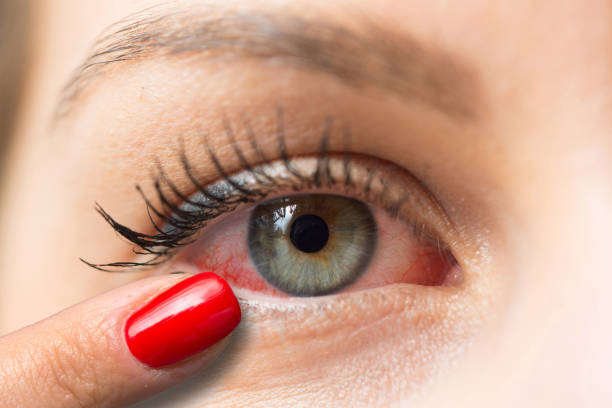
- Redness: The sclera appears red or pink.
- Swelling: Swelling of the conjunctiva and eyelids.
- Watery Eyes: Profuse tearing.
- Severe Itching: Eyes may appear red from constant rubbing.
- Both Eyes: Typically affects both eyes simultaneously.
- Associated Allergies: Accompanied by other allergy symptoms like a runny nose or sneezing.
Irritant Conjunctivitis:
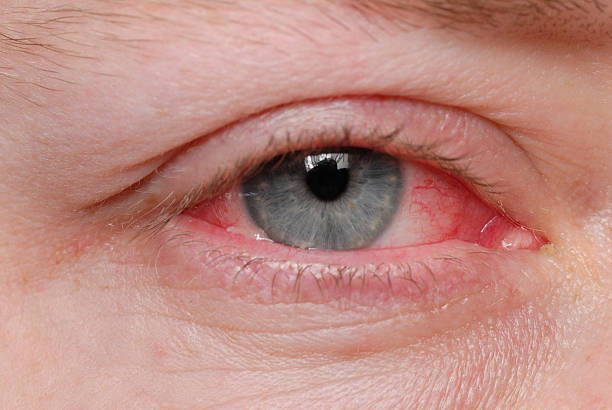
- Redness: The sclera appears red or pink.
- Watery Discharge: Clear, watery discharge similar to viral conjunctivitis.
- Swelling: Mild to moderate swelling of the eyelids.
- Foreign Body Sensation: Eyes may look irritated and teary due to the presence of an irritant.
- One or Both Eyes: Can affect one or both eyes, depending on exposure.
Visual Characteristics Summary:
- Redness: Common to all types, ranging from mild to severe.
- Discharge:
- Watery: Viral and irritant conjunctivitis.
- Thick, Yellow/Green: Bacterial conjunctivitis.
- Swelling:
- Mild: Viral and irritant conjunctivitis.
- Moderate to Severe: Bacterial and allergic conjunctivitis.
- Itching: Predominant in allergic conjunctivitis.
- Crusting: Notable in bacterial conjunctivitis, especially after sleep.
- Tearing: Prominent in viral, allergic, and irritant conjunctivitis.
By understanding these visual characteristics, you can better identify the type of pink eye you or someone else might be experiencing. However, for an accurate diagnosis and appropriate treatment, it’s always best to consult a healthcare provider. They can provide specific guidance and confirm the cause of conjunctivitis through examination and, if necessary, laboratory tests.
How Does Pink Eye Affect Children?

Pink eye, or conjunctivitis, is a common condition in children and can cause significant discomfort and disruption in their daily lives. Understanding how pink eye affects children, recognizing the symptoms, and knowing how to manage and prevent it are crucial for parents, caregivers, and teachers.
Symptoms of Pink Eye in Children:
- Red or Pink Eyes: The white part of the eye appears red or pink.
- Discharge:
- Viral: Clear, watery discharge.
- Bacterial: Thick, yellow or green discharge that can cause the eyelids to stick together.
- Allergic: Watery discharge, often accompanied by itching.
- Itching and Irritation: Constant rubbing or scratching of the eyes.
- Swelling: Swollen eyelids.
- Crusting: Eyelids may be crusted shut upon waking up, especially with bacterial conjunctivitis.
- Tearing: Increased tear production.
- Sensitivity to Light: Mild photophobia in some cases.
Impact on Children:
- Discomfort and Irritation: Pink eye can cause significant discomfort, making it difficult for children to concentrate, play, or sleep.
- School Attendance: Due to its contagious nature, children with viral or bacterial pink eye are often required to stay home from school or daycare until they are no longer contagious, which can disrupt their education and social interactions.
- Hygiene Challenges: Young children may struggle with proper hygiene, increasing the risk of spreading the infection to other children and family members.
- Emotional Distress: The discomfort and appearance of pink eye can cause distress and anxiety in children, especially if they are unable to participate in their usual activities.
Management and Treatment:
- Consult a Healthcare Provider: For an accurate diagnosis and appropriate treatment, especially if symptoms are severe or persist.
- Medication:
- Antibiotic Eye Drops or Ointments: Prescribed for bacterial conjunctivitis to reduce the duration of infection and contagion.
- Antiviral Medication: May be prescribed for severe viral conjunctivitis, though most cases resolve on their own.
- Antihistamines or Anti-inflammatory Drops: For allergic conjunctivitis to alleviate symptoms.
- Symptom Relief:
- Warm Compresses: To soothe irritation and clean away discharge.
- Cold Compresses: For allergic conjunctivitis to reduce itching and swelling.
- Artificial Tears: To lubricate the eyes and alleviate dryness.
Preventing the Spread of Pink Eye:
- Hand Hygiene: Encourage frequent handwashing with soap and water.
- Avoid Touching the Eyes: Teach children not to touch or rub their eyes.
- Personal Items: Do not share towels, washcloths, or bedding.
- Cleanliness: Regularly clean and disinfect surfaces and objects that children frequently touch.
- Stay Home: Keep children with viral or bacterial pink eye at home until they are no longer contagious, as advised by a healthcare provider.
Pink eye can significantly impact children’s comfort, school attendance, and daily activities. By recognizing the symptoms, seeking prompt treatment, and implementing effective hygiene practices, parents and caregivers can help manage the condition and prevent its spread. Ensuring that children understand the importance of hygiene and avoiding eye contact can also minimize the risk of recurrent infections.
How Is Pink Eye Diagnosed?
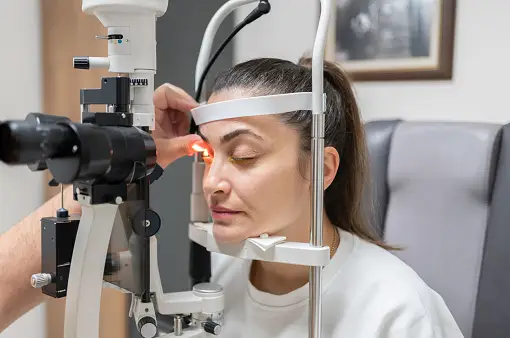
Diagnosing pink eye, or conjunctivitis, involves a combination of medical history, symptom evaluation, and physical examination. In some cases, additional tests may be required to determine the exact cause of the condition. Here’s an overview of the diagnostic process for pink eye:
1. Medical History:
- Symptoms: The healthcare provider will ask about the symptoms the patient is experiencing, such as redness, discharge, itching, tearing, and any accompanying signs like fever or sore throat.
- Duration: The onset and duration of symptoms are important for diagnosing the type of conjunctivitis.
- Exposure: Questions about recent exposure to someone with pink eye, recent illnesses, allergies, or exposure to irritants will be asked.
- Health Background: Information about the patient’s overall health, including any existing medical conditions, medications, and previous occurrences of eye infections.
2. Physical Examination:
- Eye Inspection: The healthcare provider will examine the eyes for redness, swelling, discharge, and other signs of inflammation.
- Eyelid Examination: The eyelids may be checked for swelling, redness, and crusting.
- Conjunctiva Examination: Using a bright light and magnification, the provider will examine the conjunctiva to assess the severity of inflammation and the presence of discharge.
3. Diagnostic Tests:
- Slit-Lamp Examination: A slit lamp, which is a microscope with a bright light, may be used to get a more detailed view of the eye structures.
- Conjunctival Swab: A sample of the discharge or cells from the conjunctiva may be collected using a swab. This sample can be sent to a laboratory to identify the specific bacteria or virus causing the infection.
- Allergy Tests: If allergic conjunctivitis is suspected, allergy testing may be conducted to identify the specific allergens triggering the symptoms.
4. Differentiating Types of Conjunctivitis:
- Viral Conjunctivitis:
- Often associated with a recent upper respiratory infection.
- Clear, watery discharge.
- Highly contagious.
- Bacterial Conjunctivitis:
- Thick, yellow or green discharge.
- Eyelids stuck together, especially in the morning.
- Contagious and often affects children.
- Allergic Conjunctivitis:
- Severe itching.
- Watery discharge and red eyes.
- Often accompanied by other allergy symptoms like sneezing and a runny nose.
- Not contagious.
- Irritant Conjunctivitis:
- History of exposure to an irritant (e.g., smoke, chlorine).
- Watery discharge and redness.
- Not contagious.
Diagnosing pink eye involves a thorough evaluation of symptoms, medical history, and a physical examination of the eyes. In some cases, additional tests such as a conjunctival swab or allergy testing may be necessary to identify the specific cause of conjunctivitis. Prompt and accurate diagnosis is crucial for effective treatment and preventing the spread of contagious forms of pink eye. If you or your child experience symptoms of pink eye, it’s important to consult a healthcare provider for an appropriate diagnosis and treatment plan.
How to Prevent Pink Eye
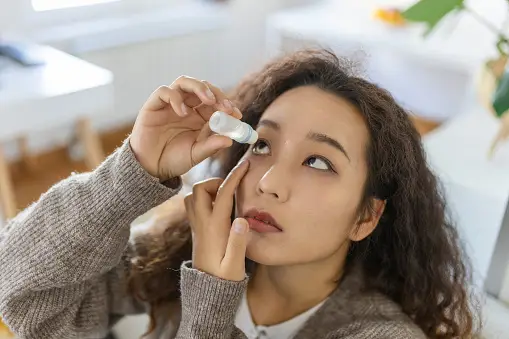
Preventing pink eye, or conjunctivitis, involves practicing good hygiene, taking precautions to avoid exposure to infectious agents, and managing underlying conditions that can lead to conjunctivitis. Here are comprehensive strategies to prevent the different types of pink eye:
General Hygiene Practices:
- Hand Washing:
- Wash hands frequently with soap and water for at least 20 seconds.
- Use hand sanitizer with at least 60% alcohol if soap and water are not available.
- Avoid Touching the Eyes:
- Refrain from touching or rubbing your eyes with unwashed hands.
- Teach children the importance of not touching their eyes.
- Personal Items:
- Do not share personal items such as towels, washcloths, eye makeup, and contact lenses.
- Use separate towels and bedding for individuals with pink eye.
- Disinfect Surfaces:
- Regularly clean and disinfect frequently touched surfaces such as doorknobs, light switches, and bathroom fixtures.
Preventing Viral and Bacterial Conjunctivitis:
- Avoid Close Contact:
- Minimize close contact with individuals who have pink eye.
- Stay home from school, work, or daycare if you or your child has pink eye until no longer contagious, as advised by a healthcare provider.
- Proper Contact Lens Care:
- Follow proper hygiene practices for contact lens use, including washing hands before handling lenses and using appropriate cleaning solutions.
- Do not use expired contact lenses or solutions.
- Dispose of Contaminated Items:
- Discard contaminated tissues, cotton balls, or makeup used during an eye infection.
- Use Clean Towels and Bedding:
- Change towels and pillowcases frequently, especially if someone in the household has pink eye.
Preventing Allergic Conjunctivitis:
- Avoid Allergens:
- Identify and avoid exposure to known allergens such as pollen, pet dander, dust mites, and mold.
- Use air purifiers and keep windows closed during high pollen seasons.
- Manage Allergies:
- Take prescribed allergy medications as directed.
- Use antihistamine eye drops to relieve symptoms.
- Clean Living Spaces:
- Regularly clean and vacuum to reduce allergen levels in the home.
Preventing Irritant Conjunctivitis:
- Protective Eyewear:
- Wear protective goggles or glasses when exposed to irritants such as smoke, chemicals, or dust.
- Flush Eyes:
- If exposed to an irritant, rinse eyes immediately with clean water or saline solution.
- Safe Use of Chemicals:
- Follow safety guidelines when using household cleaning products, and ensure proper ventilation.
Special Considerations for Children:
- Teach Hygiene:
- Educate children on the importance of handwashing and not touching their eyes.
- Supervise young children to ensure they follow hygiene practices.
- School and Daycare Policies:
- Follow school or daycare policies regarding exclusion periods for children with pink eye to prevent spreading the infection to others.
- Vaccination:
- Ensure children receive recommended vaccinations, as some vaccines (e.g., measles, rubella) can help prevent viral infections that may lead to conjunctivitis.
Preventing pink eye involves a combination of good hygiene practices, avoiding exposure to infectious agents, and managing allergies and irritants. By adopting these preventive measures, individuals can significantly reduce the risk of developing or spreading conjunctivitis. For parents and caregivers, teaching children proper hygiene and monitoring their adherence to these practices is crucial in preventing pink eye in school and daycare settings. If you or your child experience symptoms of pink eye, consult a healthcare provider for appropriate advice and treatment.
Treatments for Pink Eye

The treatment for pink eye, or conjunctivitis, depends on the underlying cause: viral, bacterial, allergic, or irritant. Here are the treatment approaches for each type:
1. Viral Conjunctivitis:
- Symptomatic Relief:
- Cold Compresses: Apply cold compresses to reduce discomfort and swelling.
- Artificial Tears: Use over-the-counter artificial tears to lubricate the eyes and alleviate dryness and irritation.
- Hygiene Practices:
- Avoid touching or rubbing the eyes.
- Practice good hand hygiene to prevent spreading the infection.
- Rest and Recovery:
- Viral conjunctivitis usually resolves on its own within one to two weeks. Rest and supportive care are often sufficient.
- Avoid Spreading:
- Stay home from school or work until symptoms improve and the risk of contagion decreases.
2. Bacterial Conjunctivitis:
- Antibiotic Eye Drops or Ointments:
- Prescribed by a healthcare provider to shorten the duration of the infection and reduce contagiousness.
- Common antibiotics include erythromycin, tobramycin, or polymyxin B.
- Hygiene Practices:
- Clean any discharge from the eyes using a clean, warm, damp cloth.
- Avoid sharing personal items like towels or pillowcases.
- Follow-Up:
- Complete the full course of prescribed antibiotics even if symptoms improve to ensure the infection is fully cleared.
3. Allergic Conjunctivitis:
- Avoid Allergens:
- Identify and avoid exposure to known allergens (e.g., pollen, pet dander, dust mites).
- Antihistamine Eye Drops:
- Over-the-counter or prescription antihistamine eye drops can relieve itching and redness.
- Examples include ketotifen, olopatadine, or naphazoline.
- Oral Antihistamines:
- Taking oral antihistamines can help manage overall allergy symptoms.
- Cold Compresses:
- Applying cold compresses can reduce swelling and itching.
4. Irritant Conjunctivitis:
- Remove the Irritant:
- Flush the eyes with clean water or saline solution to remove the irritant.
- Symptomatic Relief:
- Use artificial tears to soothe irritation and keep the eyes moist.
- Avoid Further Exposure:
- Identify and avoid the source of irritation (e.g., chemicals, smoke, chlorine).
General Recommendations:
- Avoid Contact Lenses:
- Do not wear contact lenses until the pink eye has completely resolved, as lenses can exacerbate the condition.
- Clean Eyewear:
- Disinfect or replace contact lenses, lens cases, and glasses to prevent re-infection.
- Prevent Spreading:
- Maintain good hygiene practices to avoid spreading the infection to others.
- Wash hands frequently, avoid sharing personal items, and clean surfaces regularly.
Treating pink eye involves addressing the specific cause of the condition. While viral conjunctivitis often resolves on its own, bacterial conjunctivitis requires antibiotics. Allergic conjunctivitis benefits from avoiding allergens and using antihistamines, while irritant conjunctivitis requires removal of the irritant and soothing measures. Good hygiene practices are essential in all cases to prevent the spread of infection and promote healing. If symptoms persist or worsen, it is important to seek medical advice for appropriate diagnosis and treatment.
When to See a Healthcare Provider for Pink Eye
While many cases of pink eye (conjunctivitis) are mild and can resolve on their own, certain symptoms and situations require professional medical evaluation and treatment. Here are key indicators of when to see a healthcare provider for pink eye:
1. Severe Symptoms:
- Intense Eye Pain: Significant pain in the eye is not typical for simple conjunctivitis and warrants medical attention.
- Vision Changes: Blurred vision, decreased vision, or any changes in vision should be evaluated by a healthcare provider immediately.
- Sensitivity to Light: Extreme photophobia (light sensitivity) can indicate a more serious condition.
- Severe Redness: If redness is pronounced and extends beyond the conjunctiva to other parts of the eye.
2. Persistent or Worsening Symptoms:
- Duration: If symptoms persist for more than a week without improvement, it is advisable to seek medical advice.
- Worsening Condition: If symptoms worsen despite home treatment, it could indicate a more serious infection or an incorrect initial diagnosis.
3. Signs of Bacterial Infection:
- Thick Discharge: Yellow or green discharge that causes the eyelids to stick together, especially after sleep.
- Eyelid Swelling: Significant swelling of the eyelids.
- Fever: Accompanying fever, which can indicate a systemic infection.
4. Recurrent Conjunctivitis:
- Frequent Episodes: Multiple episodes of pink eye may suggest an underlying condition that requires further investigation.
- Chronic Symptoms: Persistent symptoms despite treatment could indicate chronic conjunctivitis or another underlying issue.
5. Contact Lens Wearers:
- Eye Pain: If you wear contact lenses and experience eye pain, redness, or discharge, discontinue use immediately and consult a healthcare provider.
- Lens Complications: Redness or discomfort after using contact lenses, especially if the lenses are new or if you’ve switched to a new type of lens or solution.
6. Infants and Young Children:
- Infant Conjunctivitis: Newborns and infants with symptoms of pink eye should be evaluated promptly to prevent complications.
- Severe Symptoms: Young children with severe symptoms or who are unable to communicate their discomfort should be seen by a healthcare provider.
7. Associated Symptoms:
- Respiratory Symptoms: Conjunctivitis accompanied by severe respiratory symptoms like difficulty breathing.
- Skin Rash: Presence of a skin rash along with pink eye could indicate a more serious condition such as measles or an allergic reaction.
8. Suspected Allergic Reaction:
- Severe Allergic Reaction: If pink eye is part of a severe allergic reaction (anaphylaxis) characterized by difficulty breathing, swelling of the face or throat, or hives, seek emergency medical attention.
What to Expect During the Visit:
- Medical History: The healthcare provider will ask about your symptoms, duration, and any possible exposures or underlying conditions.
- Eye Examination: A thorough examination of the eyes to check for signs of infection, inflammation, or other abnormalities.
- Diagnostic Tests: In some cases, a swab of the conjunctiva may be taken to identify the specific cause of the infection.
- Treatment Plan: Based on the diagnosis, the healthcare provider will recommend appropriate treatment, which may include antibiotics, antiviral medications, antihistamines, or other therapies.
While many cases of pink eye are mild and can be managed at home, certain symptoms and situations require the expertise of a healthcare provider. Severe, persistent, or worsening symptoms, signs of bacterial infection, and complications in contact lens wearers, infants, or those with recurrent conjunctivitis all necessitate medical evaluation. Prompt attention to these signs can prevent complications and ensure appropriate treatment. If in doubt, it is always best to consult a healthcare provider to ensure the health and safety of your eyes.
Conclusion
Pink eye, or conjunctivitis, is a common eye condition that can affect individuals of all ages. Understanding the different types of pink eye—viral, bacterial, allergic, and irritant—helps in identifying the appropriate treatment and preventive measures. While many cases are mild and can resolve with simple home care, it is crucial to recognize when to seek professional medical advice to prevent complications and ensure effective treatment.
Good hygiene practices, such as frequent hand washing, avoiding touching the eyes, and not sharing personal items, are essential in preventing the spread of pink eye. For those with allergies, avoiding known allergens and using appropriate medications can help manage symptoms and prevent recurrence. In cases of bacterial conjunctivitis, timely antibiotic treatment is necessary to reduce the duration of the infection and its contagiousness.
Special attention should be given to contact lens wearers, infants, and young children, as they may require different approaches to management and care. Recognizing the signs that warrant medical attention—such as severe pain, vision changes, persistent symptoms, and signs of systemic infection—is vital for timely and effective intervention.
By adopting preventive measures, seeking prompt treatment when needed, and practicing good eye hygiene, individuals can significantly reduce the impact of pink eye on their daily lives. Education and awareness are key to managing this common eye condition effectively, ensuring both personal comfort and public health.
If you or a loved one experience symptoms of pink eye, do not hesitate to consult a healthcare provider for an accurate diagnosis and appropriate treatment plan. Taking proactive steps can help maintain eye health and prevent the spread of this easily transmissible condition.
